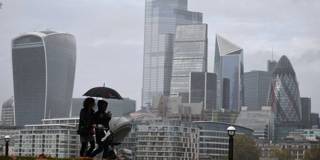The global COVID-19 pandemic has resulted in soaring infection rates, widespread lockdowns, record-shattering declines in output, and spiking poverty. But, in addition to these trends, a quieter crisis now gaining momentum could jeopardize economic recovery prospects for years to come.
WASHINGTON, DC – The term “financial crisis” has long been associated with dramas such as bank runs and asset-price crashes. Charles Kindleberger’s classic books The World in Depression, 1929-1939 and Manias, Panics and Crashes, and my own work with Kenneth Rogoff, This Time Is Different, document scores of these episodes. In recent years, the term “Lehman moment” has stood out as a marker of the 2007-09 global financial crisis and even inspired a Broadway show.
But some financial crises do not involve the drama of Lehman moments. Asset quality can deteriorate significantly as economic downturns persist, especially when firms and households are highly leveraged. Moreover, years of bank lending to unproductive private firms or state-owned enterprises (the latter is not uncommon in some developing countries) take a cumulative toll on balance sheets.
Although these crises may not always include panics and runs, they still impose multiple costs. Bank restructuring and recapitalization to restore solvency can be expensive for governments and taxpayers, and new lending can remain depressed, slowing economic activity. The credit crunch also has distributional effects, because it hits small and medium-size businesses and lower-income households more acutely.

WASHINGTON, DC – The term “financial crisis” has long been associated with dramas such as bank runs and asset-price crashes. Charles Kindleberger’s classic books The World in Depression, 1929-1939 and Manias, Panics and Crashes, and my own work with Kenneth Rogoff, This Time Is Different, document scores of these episodes. In recent years, the term “Lehman moment” has stood out as a marker of the 2007-09 global financial crisis and even inspired a Broadway show.
But some financial crises do not involve the drama of Lehman moments. Asset quality can deteriorate significantly as economic downturns persist, especially when firms and households are highly leveraged. Moreover, years of bank lending to unproductive private firms or state-owned enterprises (the latter is not uncommon in some developing countries) take a cumulative toll on balance sheets.
Although these crises may not always include panics and runs, they still impose multiple costs. Bank restructuring and recapitalization to restore solvency can be expensive for governments and taxpayers, and new lending can remain depressed, slowing economic activity. The credit crunch also has distributional effects, because it hits small and medium-size businesses and lower-income households more acutely.